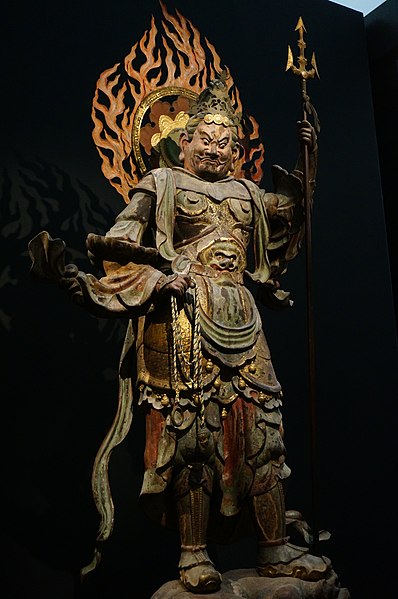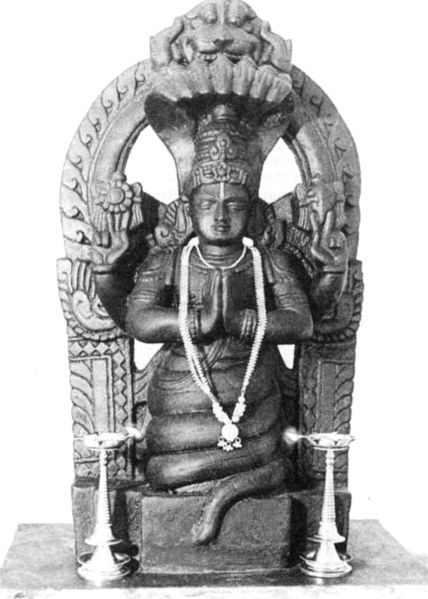A Nagaraja is a king of the various races of the nāga, the divine or semi-divine, half-human, half-serpent beings that reside in the netherworld (Patala), and can occasionally take human form.
Rituals devoted to these supernatural beings have been taking place throughout South Asia for at least two thousand years.
8th-century Nagaraja carving, Alampur, Telangana
A statue of Nagaraja
A Nagaraja with his wife in Buddhist Ajanta Caves.
Statue of Virūpākṣa. Jōruri-ji, Japan.
In various Asian religious traditions, the Nagas are a divine, or semi-divine, race of half-human, half-serpent beings that reside in the netherworld (Patala), and can occasionally take human or part-human form, or are so depicted in art. A female naga is called a Nagi, or a Nagini. Their descendents are known as Nagavanshi. According to legend, they are the children of the sage Kashyapa and Kadru. Rituals devoted to these supernatural beings have been taking place throughout South Asia for at least 2,000 years. They are principally depicted in three forms: as entirely human with snakes on the heads and necks, as common serpents, or as half-human, half-snake beings in Hinduism, Buddhism, and Jainism.
A Naga couple, featured as a Hoysala relief
Patanjali as Śeṣa.
Mucalinda sheltering Gautama Buddha (Buddha in Naga Prok attitude) at Wat Phra That Doi Suthep in Chiang Mai, Thailand.
Nāga at the steps of a building in the Wat Phra Kaew in Bangkok.







